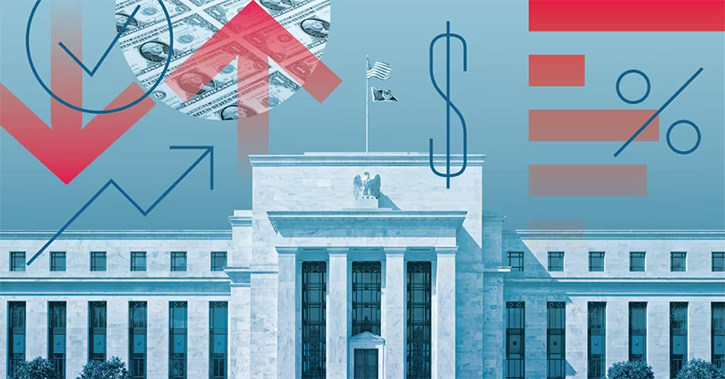Jeremy Glaser: For Morningstar, I'm Jeremy Glaser. Despite trading for less than 30 minutes on Thursday, the Chinese stock market has roiled global markets again. I'm here with Dan Rohr--he's an analyst here at Morningstar--for his take on what's happening in China and what impact it will have on the U.S. Dan, thank you for joining me.
Dan Rohr: My pleasure.
Glaser: Let's start with why China, really, since the beginning of the year has been under such intense pressure. Have we really seen any new data that changes the story at all?
Rohr: I think what we've seen out of the Chinese equity market is really a combination of multiple factors: fundamental, technical, and then behavioral, too. Fundamental, in the sense that the recent data hasn't been all that great. For example, you had the services PMI just hit a 17-month low. This really punches a hole in the bullish narrative that China could somehow rebalance from an investment in a manufacturing-oriented economy to one more oriented to consumption and services. And then you also had the big drop in China's foreign reserves for the declines in the RMB. So, there were fundamental factors at play with the declines we've seen in the Chinese equity market.
You have the technical factor exacerbating those fundamental declines in the sense that these circuit breakers that the government has employed in the equity market--basically, pausing trading for 15 minutes when you have a 5% decline and then halting trading altogether for the remainder of the day with a 7% decline--causing this phenomenon of rushing for the exits. So, once that 5% threshold kicks in, you have everyone trying to sell, trying to get ahead of the 7% threshold. It ends up being a bit of a self-fulfilling prophecy.
Finally, you have the behavioral factor. This has to do with the fact that the Chinese stock market is fairly undeveloped relative to most developed-economy stock markets in the sense that it tends to be somewhat divorced from economic fundamentals and trades more on people's expectations of where stock prices are headed, as opposed to where business fundamentals are headed. Remember this is a stock market that had an enormous bull run from summer 2014 to summer 2015, despite month after month after month of deteriorating economic fundamentals. So, just a small change in investment sentiment regarding where prices are headed can beget very large swings in share-price movement. So, I think that's in play, too.
Glaser: You mentioned those circuit breakers. What other government interventions have there been? Have any of those somewhat surprised the market?
Rohr: They've been trying anything. They've been throwing everything up against the wall. It's gone from the circuit breakers to preventing large holders of stocks from selling, to even pursuing criminal prosecutions of analysts, brokers, even journalists accused of talking down the Chinese stock market. Just stepping back a bit, what the government really faces here is a bit of a dilemma. On one hand, it recognizes the need for reforms, both of its markets and the economy at large. But on the other hand, it appears unwilling to cope with the pain that necessarily comes with those reforms. So, I think that's why we've seen all of these half measures that end up doing a lot more harm than good.
Glaser:So, what should investors who are looking at China keep on their radar screen for what's next? Is it another currency devaluation? Is it more intervention? What's on your radar screen?
Rohr: You mentioned the currency devaluation. Some of the work we do on the relative value of the Chinese currency suggests it could be upwards of 30% overvalued relative to the U.S. dollar, which would certainly set the stage for future declines. I do think the [People's Bank of China] has in mind a depreciation of the RMB, but it's likely targeting a very slow and steady depreciation of the RMB. So, the question is, does it have the wherewithal to get what it wants? Slow and steady versus steep and rapid. There, you start to look at the foreign reserves. And they're certainly not as big, in relative terms, as that absolute figure would suggest, but they're still sufficient to give the PBOC fire power to manage a rather slow devaluation of the RMB. Of course, in doing so, they're running a bit of a risk. They're aiming for the depreciation of the RMB, with the objective of removing some of the incentives for capital flight.
On the other hand, by allowing a continuous depreciation of the RMB, they beget a change in expectations regarding the future trajectory of the RM--in effect, stimulating capital flight. And it's that capital flight that they're ultimately concerned about because it's the capital flight that's undoing the efforts that they're undertaking domestically to stimulate the economy. So, we've had all these cuts to the reserve-requirement ratio, to the interest rates. But just as the PBOC is pumping money into the economy with these actions, companies and individuals and investors are taking money right back out with the capital flight.
Glaser: This pain has not been just in China. It has spread to Europe and into U.S. markets as well. What's the contagion--what's the linkage--between some of the issues that China is seeing and the impact it's having on other world markets?
Rohr: Well, the impact of the currency, just to isolate that, is really going to manifest most strongly if other countries follow suit, and you have a race to the bottom. The contagion effect that I'm more concerned about, as it concerns the health of the global economy, is transmitted principally through the trade sector, and this ends up impacting a lot of economies, both emerging and developed. So, you take a country like Brazil, for example: Deteriorating fixed asset investment in China has really hammered the price of iron ore, which is one of Brazil's principal exports. In turn, that has really crimped Brazil's dollar-denominated export revenue. So, that hits GDP directly. It also his GDP indirectly in the sense that fewer U.S. dollar receipts into Brazil lead to a depreciation of the Brazilian real--which, in turn, puts a lot of pressure on Brazilian companies that have borrowed in U.S. dollars. So, you have this chain reaction where slowing, say, real estate development in China ends up putting a lot of stresses in the balance sheets of Brazilian companies.
Glaser: So, then, when thinking about what the Chinese economy will look like if not this year but 10 years down the road, what are your long-term expectations? Has anything you've seen over the last couple weeks changed your thesis on what's happening with the Chinese economy?
Rohr: We've long been in the camp that China is likely to grow no better than 5% in terms of GDP, on average, in the next five to seven years. But even attaining that 5% would be predicated on some pretty painful reforms centered on facilitating the transition from an investment-led economy to a consumer-led economy. But when we see the government drag its heels on a lot of these reforms--a lot of these liberalization steps--it makes implementation less likely and, if anything, dims the long-term outlook for Chinese GDP growth from an outlook that, in our view, is already dimmer than most expected.
Glaser: Dan, thanks for the context on what's happening in China today.
Rohr: Sure.
Glaser: For Morningstar, I'm Jeremy Glaser. Thanks for watching.




















